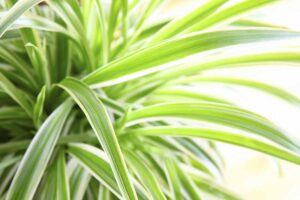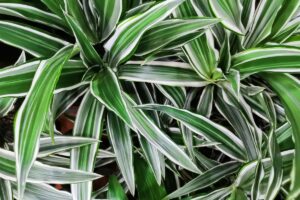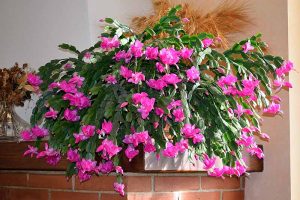I wish I had a dollar for every time someone told me they were swearing off Dracaena plants because they keep dying.
I’d be able to afford a lot more houseplants!

We link to vendors to help you find relevant products. If you buy from one of our links, we may earn a commission.
Invariably, those poor souls struggling with their dragon trees and mother-in-law’s tongues are seeing their plants suffering, so they add more water.
But I’ve got bad news for you – nine times out of 10, the plant is struggling because it’s already too wet.
Dracaena species like it dry. They don’t want all that water.
There’s even a sign hanging in my favorite plant shop that reads: “I don’t know who needs to hear this, but you’re overwatering your snake plant.”
So, yeah. Figuring out the watering situation when you’re growing dracaena is a challenge, but it’s one you’re going to have to tackle if you want them to thrive.
That’s what we’re going to help you figure out in this guide. Here’s everything we’ll go over:
How and When to Water Dracaena Plants
Dracaena species are the type of plants where less is more when it comes to irrigation. You need to take a hands-off approach to keep them happy.
If you need a refresher on how to grow these houseplants, check out our guide.
Ready to do less in order to accomplish more? Then here we go.
How Much Water Do Dracaena Plants Need?
Let’s just get this out of the way, first: How much water do these plants actually need?
Not very much!

The potting medium should be about three-quarters dry before you water it again. If you were to stick your pointer finger into the soil, it should be dry to the second knuckle.
Having said all that, they do need moderate humidity, which isn’t the same thing as wet soil.
Whatever you can do to raise the humidity in the area will help, assuming you live somewhere relatively dry – and for most of us, indoor conditions are even more dry in the winter when the heat is running.
Some indoor gardeners use trays filled with pebbles and water, others group plants to raise the collective humidity, and many opt for electric humidifiers.
You can grow plants in a glass cabinet or keep them in the bathroom. Or try a combination of these tactics.
Aim for an ambient humidity level around 50 percent.
When to Water
You can’t rely on the calendar to help you figure out when to water. You might hear advice like “water once a week” or every month on the full moon, or whatever. Don’t listen to this.
The most reliable ways to determine when to water are to use a soil moisture meter or stick your finger in the soil.
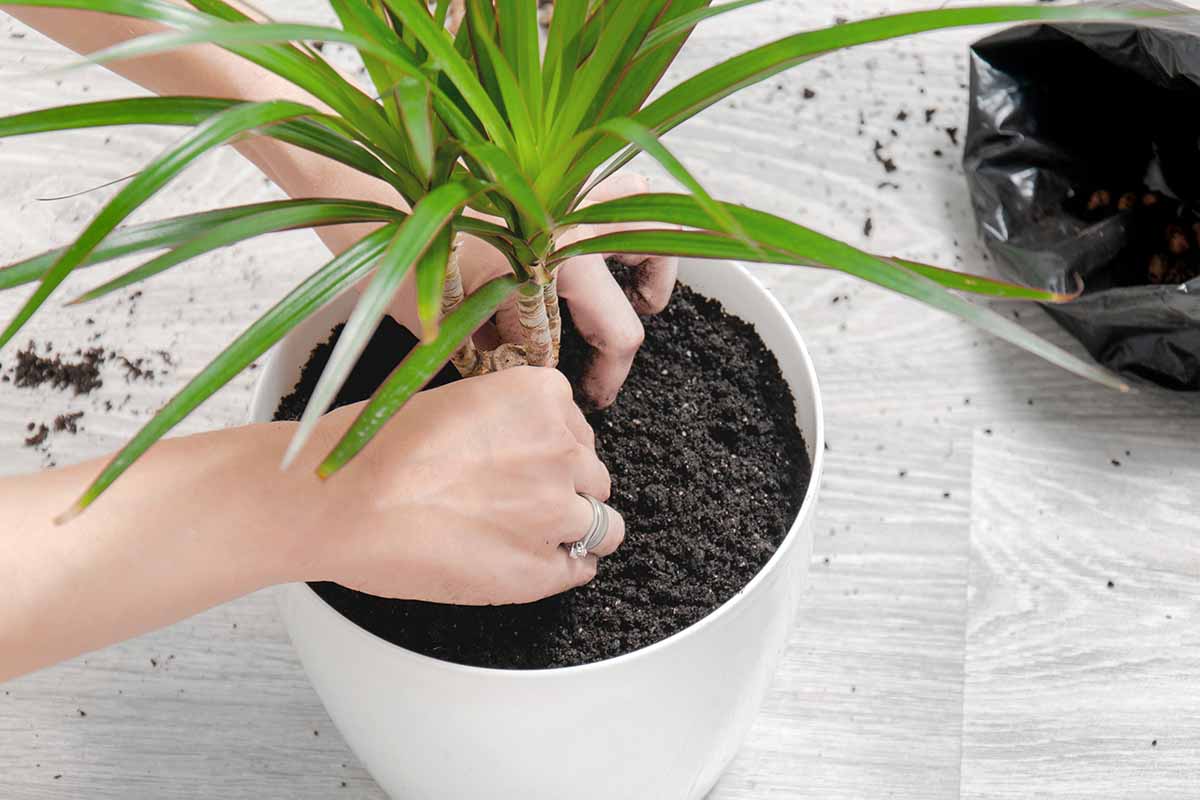
Some people learn to tell when irrigation is needed by lifting the pot and feeling how much lighter it feels compared to when it’s full of moisture, and that works too, but a little more experience and familiarity with your plants is usually required.
Whatever method you choose, it needs to be one that lets you see what is happening in that moment with the soil.
Maybe the light exposure or humidity has changed in your home, or the roots have expanded into the soil so it’s holding less moisture. These are common occurrences! Or you might not realize that a drainage hole has become clogged up and the moisture is trapped.
No matter what, you have to check the soil.
I’m telling you, once you get in the habit, it takes no extra time at all, and your plants will be much better off.
Watering Tips
The process of watering sounds simple. Fill the watering can. Pour it on the soil. Voila!
While that works, there’s a little more to it than that.

First, the type of water you choose matters. Dracaena plants are sensitive to fluoride salts, so use distilled, purified, or rainwater.
Pour the water onto the soil and let it soak in for a bit. Then, apply a little more. Water until you see some coming out of the drainage holes.
Come back and empty the catchment container after about 30 minutes. You don’t want to leave your plants sitting in standing water. On that note…
How to Tell If You’re Overwatering
The most obvious sign of overwatering, besides soil that smells moldy and is consistently wet, are brown leaves and leaf tips. If you notice these forming on your plant, check the soil moisture level.

If you keep overwatering, eventually the roots will start to rot. The rot may extend up into the stem, which will look soft and dark brown.
Uhoh. What next?
What to Do If You Overwater
If you overwater just one time, it’s not a big deal.
Your catchment container will probably overfill and you’ll spill some water all over your furniture, and you’ll have to run frantically to grab a towel and try to salvage the situation. Not that I’ve ever done that or anything…
If this happens, keep emptying the catchment container until it stops filling up. You might need to come back every 30 minutes or so for a few hours while the excess continues to drain.
If you’re overwatering a bit more regularly, however, you’re going to need to do a little extra work to help your plant recover. When you overwater, it drowns the roots and invites pathogens.
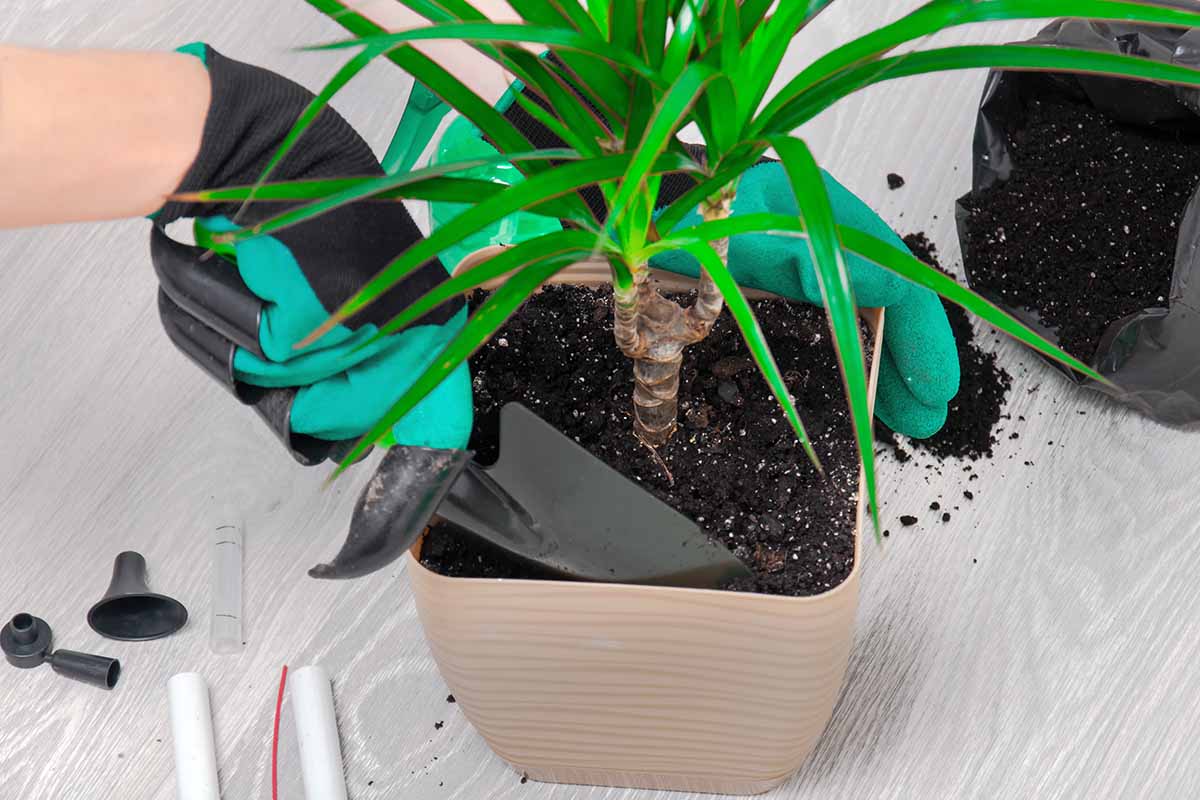
To fix it, pull the plant out of the container and dump the soil. Brush or wash any excess soil from the roots.
Wipe the pot out with soapy water and then fill it with fresh soil. If a lack of drainage is also an issue here, switch it for a different pot!
Spray the exposed roots with copper fungicide and replant in fresh soil.
Copper fungicide kills a broad range of pathogens and, if you don’t overuse it, it isn’t harmful to the plant. I keep it around all the time because it’s so handy for addressing so many problems.
If you don’t already have some, pick a bottle up at Arbico Organics.
They carry a range of sizes, including 32-ounce ready-to-use containers from Bonide.
Trim off any leaves that have died and slice off any ends that have turned brown. We have a guide that can provide some additional assistance should your plant end up with black stems.
I Don’t Know Who Needs To Hear This, But You’re Overwatering Your Dracaena
Okay, not everyone overwaters their dracaena. I imagine. I’m sure there are people out there who are underwatering…
But now, you’re neither of those! You’re someone who knows exactly how much water your plants need and when to water them.

So fess up. Were you watering too much? If so, don’t feel bad. It’s extremely common. Share your experiences with us in the comments – I think you’ll find you’re not alone.
Did this guide help you figure out how to be the best at watering your snake plant or dragon tree?
Awesome! We have a few other articles on Dracaena that can help you find even more success with these plants! Check out the following:

